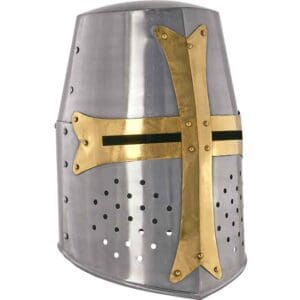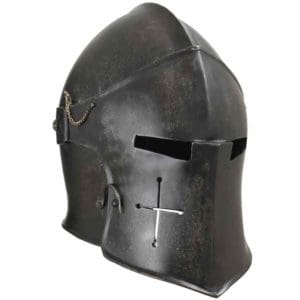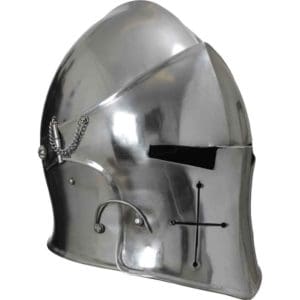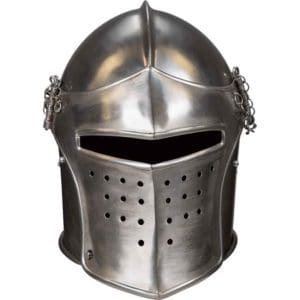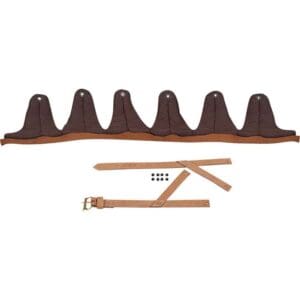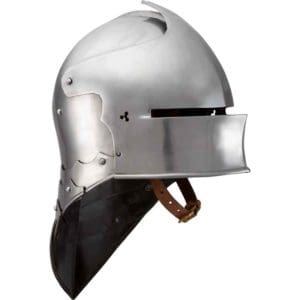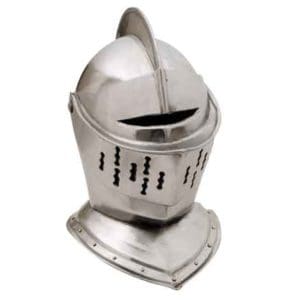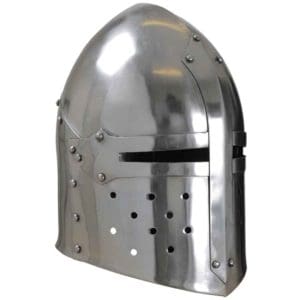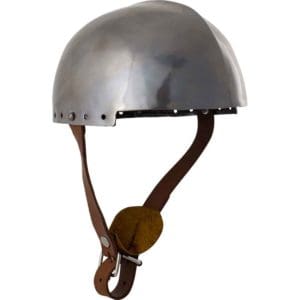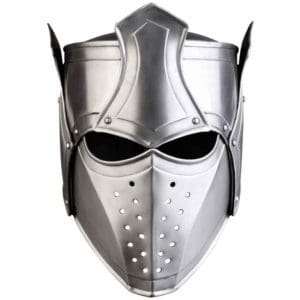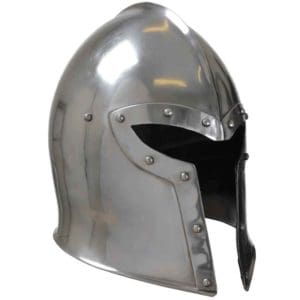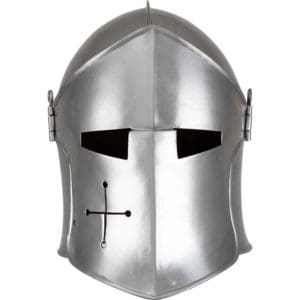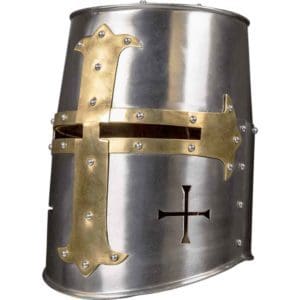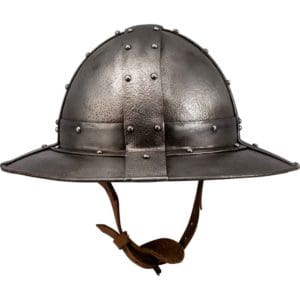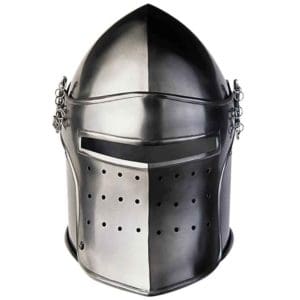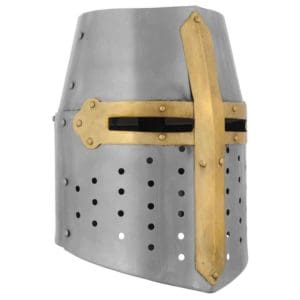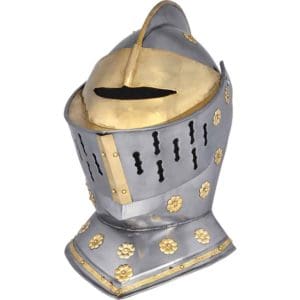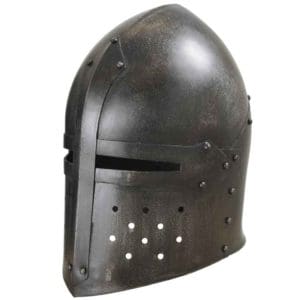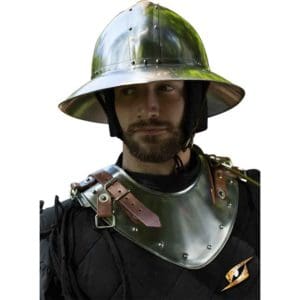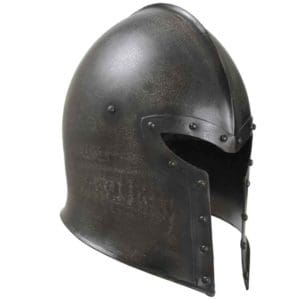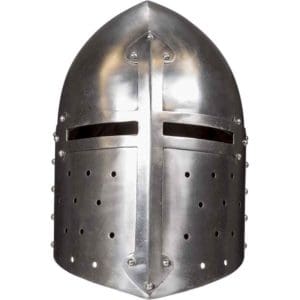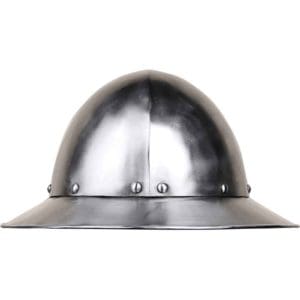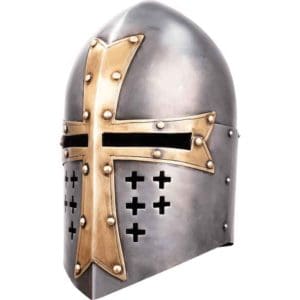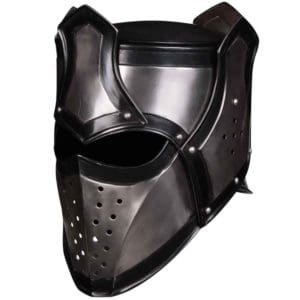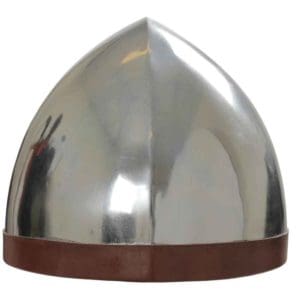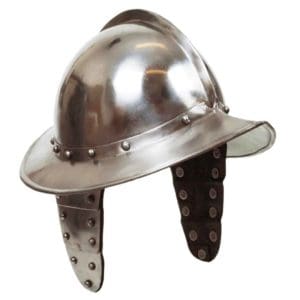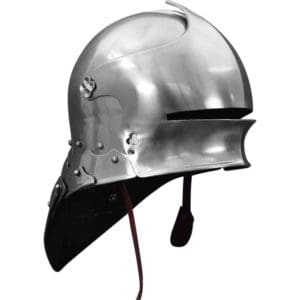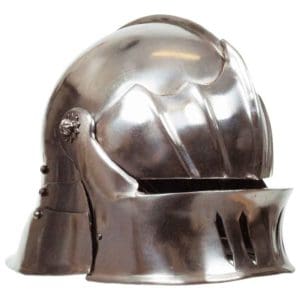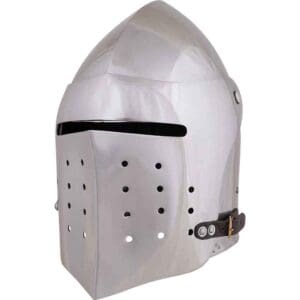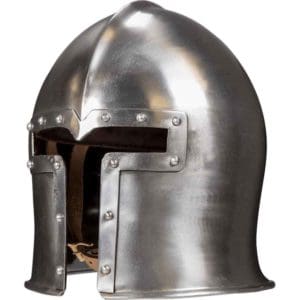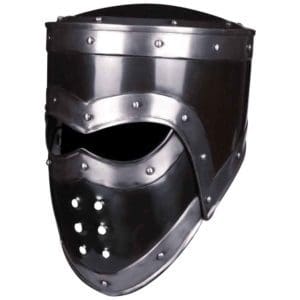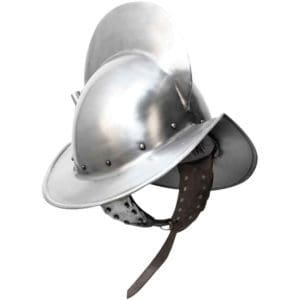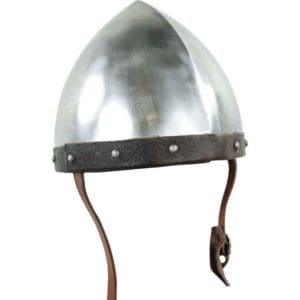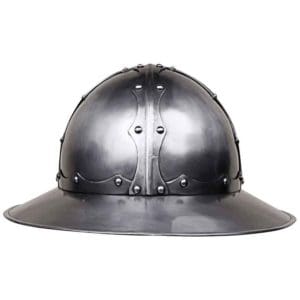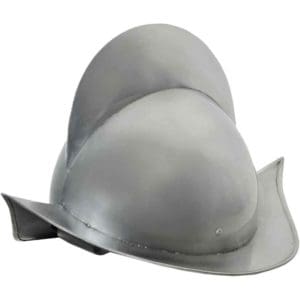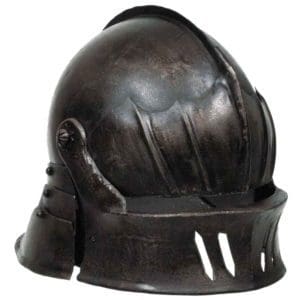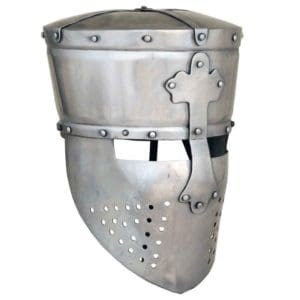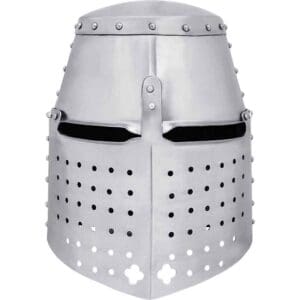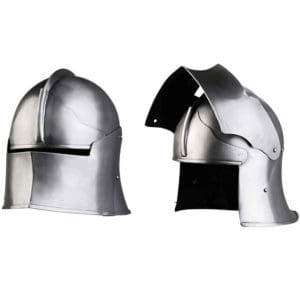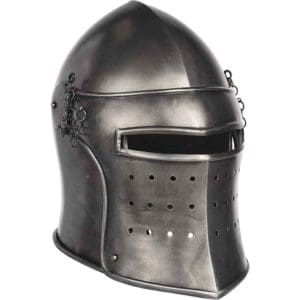Medieval Helms
Medieval helmets offer solid head protection—knights in armor during the Middle Ages wore a variety of medieval helmets. While the helmet style may have varied from region to region, including such designs as the sallet, the armet, the great helmet, the bascinet, and the barbute, the function was always the same. Knight helmets are an essential part in completing a suit of armor, so they are great to add to your collection.
What Is a Knight’s Helmet Called?
The knight helmet existed in different types, reflecting transformations throughout the times. Read about the great helm and other helmets/knight headgear.
Sallets
The sallet helmet is a combat helmet worn by Medieval soldiers. This variant of the bascinet helmet was popular in most of Europe in the 15th century. It entirely replaced the bascinet in Medieval Italy.
There were many variants of this helmet because of the many modifications of the design by every country, though the differences were insignificant. For example, many Renaissance historians describe an Italian sallet to be more open-faced and curved to provide better visibility for their archers.
However, as the helmet became more open-faced, it made the soldiers’ faces more susceptible to injury, thus causing soldiers to go back to the more closed design.
Armets
The Medieval knight helmet called the armet refers to a helmet with a hinged visor, with its cheekpieces hinged to the base of the bowl near the ears. Its eye slits are very narrow to protect the face and eyes from a strike.
The armet was the typical knight helmet when on horseback at that time because of the protection it offered to combatants. Throughout its long use in Renaissance and Medieval Europe, it underwent gradual changes in design, such as pierced ventilation on the right side to protect the more exposed left side.
Great Helmets
One of the most well-known Medieval helmets is the great helmet (also known as great helm, pot helm, heaume, or bucket helm). It’s the first Medieval helmet that completely covers the face of the Medieval soldier.
In the beginning, this knight helmet had a flat top, but that gave hammers too much of an advantage so they changed it to have a conical top to lessen the impact of hammer blows. Medieval knights didn’t wear these things alone. They put extra padding on their heads to lessen the impact of direct hits on their great helmets.
Bascinet
Of all the helmets used in medieval times, the bascinet was very unique because of its singular shape. Its shape and design differed greatly from the previously used iron skullcap in Europe.
This type of medieval helmet had a high and pointed skull. Later, it was extended to provide protection to the neck as well. The design changed when the great bascinet was used. The conical top gave way to a more rounded top.
Barbutes
The barbute knight helmet (barbuta in Italian) is a tall form of visorless helmet with a narrow T- or Y-shaped face opening. They were exclusively used by Italian knights and soldiers in the late 15th century.
The barbute is forged from a single plate of steel, the top rising to a sharp comb and descending at the sides and the back. This marvelous piece of craftsmanship demonstrates the amazing skill of Italian blacksmiths and forgers at that time.
Shop the Perfect Helmet for Your Look at Medieval Collectibles
Medieval Collectibles has a large variety of medieval, Renaissance, and even Greek helmets for your re-enacting needs. Our functional and decorative steel, rubber, plastic, and leather helmets make for great additions to any collection.

